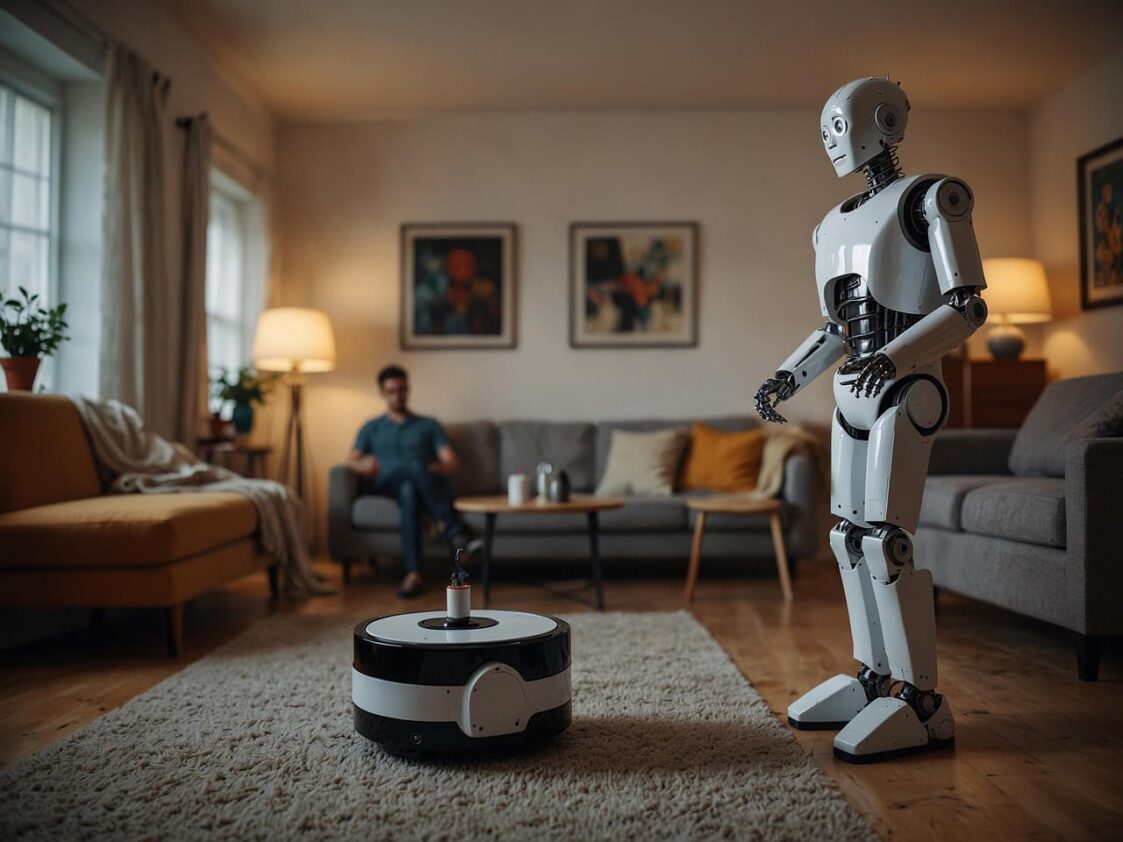Robots have become part of the background in our daily routines. From the vacuum cleaning your living room to automated assistants at airports, they’re already making life easier. But most of what we’ve seen so far are still early steps.
The real breakthroughs are just starting.
As technology moves forward, robots are starting to think, learn, and adapt in ways that used to sound like science fiction. So, what other interesting aspects can we expect?
Smarter Systems, Smarter Lives
Right now, most household robots do one thing well. They vacuum, mow lawns, or monitor your home. But the next wave will be smarter, more helpful, and able to handle a wider range of tasks.
Think robots that understand your daily schedule, notice when you’re running low on groceries, or help elderly family members remember medications.
Many of these improvements are being driven by smart robotics systems that combine sensors, artificial intelligence, and real-time data. These systems help robots learn and adapt. Instead of being programmed for a single task, they observe and evolve based on your habits.
At Work and Behind the Scenes

Outside the home, robots are already changing how we work:
- Warehouses use autonomous vehicles to move products.
- Restaurants use robotic arms to flip burgers or mix drinks.
- Hospitals use robots for surgeries that require steady, precise hands.
But this is just the beginning.
We’re entering a time when advanced robotics technology will allow machines to take on roles that involve decision-making, not just manual tasks. Collaborative robots, or cobots, are designed to work safely alongside people.
They’re already common in manufacturing but now are being tested in labs, offices and even customer service.
Nearly 3.9 million industrial robots were in use globally by the end of 2022. That number is expected to grow, especially in areas like logistics, health care, and construction.
Robots and Digital Entertainment
AI-powered systems are helping to design game environments, shape player experiences, and adapt gameplay in real time. These developments draw on similar tools used in robotics, such as predictive learning and real-time feedback loops.
In some experimental settings, robots are even being used to interact with virtual reality spaces.
These systems move in sync with a player’s actions or help create a more physical gaming experience. We’re looking at a future where autonomous robotic systems let you play a game with a robot partner who adapts to your style and responds like a real teammate.
Some developers are already even exploring how robotic motion can be applied to motion-capture for games or animated films.
What Comes Next?
We’re likely to see big changes in the next few years. Here are a few trends that stand out:
- More emotional intelligence: Robots that can detect tone of voice, facial expressions, and body language to respond in more human-like ways.
- Better mobility: Robots that can move across different surfaces, navigate stairs, and work safely in crowded spaces.
- Expanded use in health care: From robotic nurses that help with patient care to assistants in mental health therapy.
- Greater role in education: Robots that help children learn, especially in remote or underserved areas.
While many of these systems are still in development, the foundation is already there. As processing power improves and AI continues to evolve, the limits of what robots can do will just keep expanding.
Balancing Progress With Caution
As robots take on more personal and social roles, there are also concerns like privacy. If a robot is constantly watching, recording, or learning from its environment, where does that data go? How is it protected?
People also may be comfortable letting a robot vacuum their floor but they might hesitate to let one care for a child or elderly parent. That’s why developers are working not just on tech but building systems that are safe, explainable, and ethical.
There’s also the question of jobs. While robots can make some work easier, what if they take over roles traditionally held by people?
Conclusion
With smart robotics systems, advanced robotics technology, and autonomous robotic systems leading the way, robots will soon be part of nearly every aspect of life. Their future is in becoming more adaptive, intelligent, and emotionally aware.
The more they learn to understand us, the more useful they’ll become. And while there’s still a lot of work to be done, one thing’s clear: the robotics revolution is far from over. We’re watching it just getting started.
